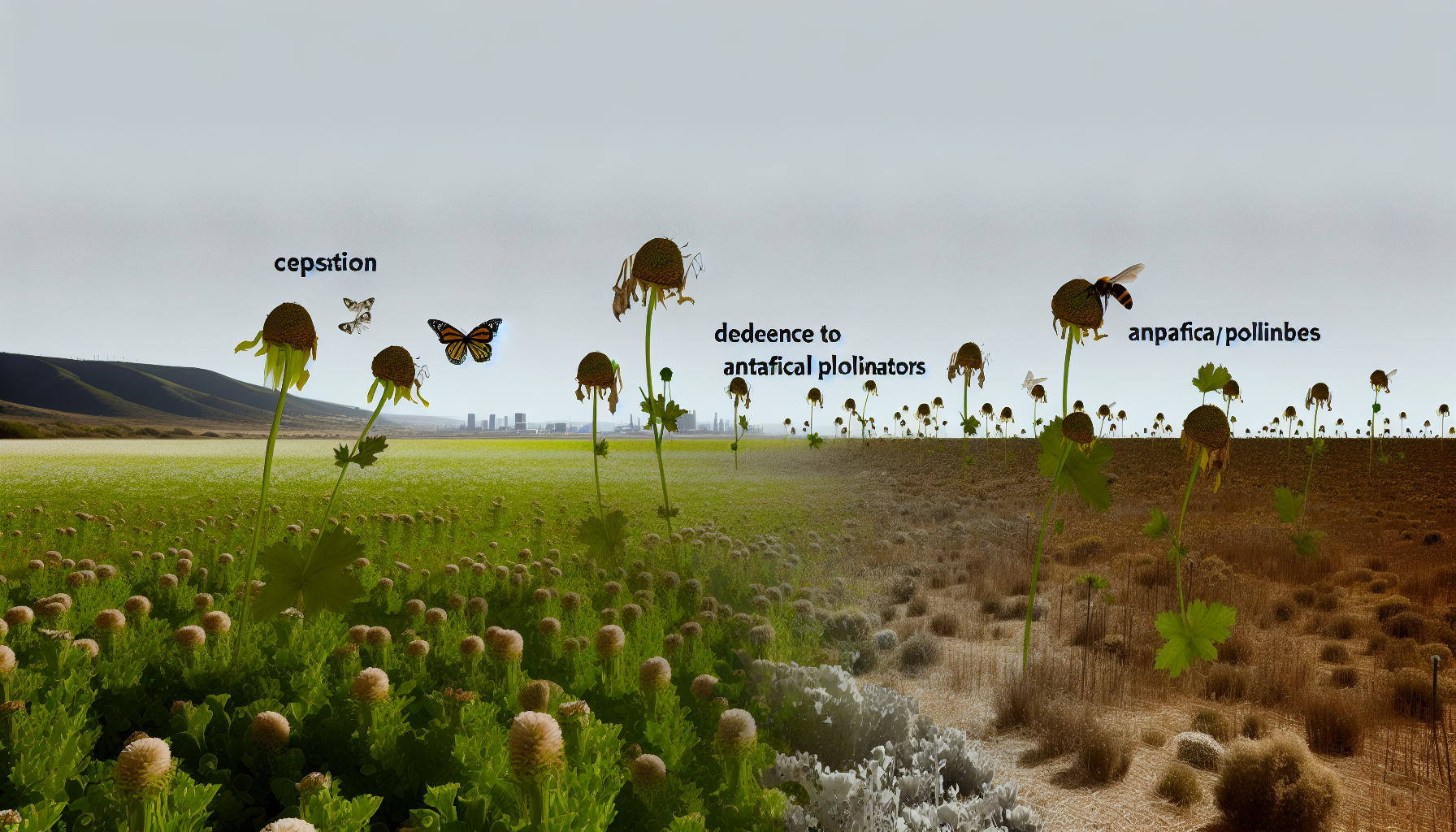In the crisp, eerie silence of what was once a vibrant ecosystem, we pay a visit to a spectacle of heartbreaking beauty: The Last Flower Show. Gone are the buzzing bees, the fluttering butterflies, and the vibrant hummingbirds. Instead, the stillness is palpable, the air heavy with the scent of flowers that no longer bear fruit – a harrowing testament to a world without pollination.
Imagine, if you will, gardens of surreal calm. Flowers unfurling their petals not to the dance of pollinators, but to the sterile gaze of desperate onlookers. It’s a performance, a show put on for the end times; a parade of floral ghosts strutting decadently in front of an audience whose applause will never come. For what is a flower show without the assurance of continuance, the promise of seeds plumped within the ovules, ready to spawn the next generation?
Yet, these blossoms unfurl stubbornly, as if in defiance of the ecological collapse that has befallen their world. The implications of their fruitless endeavor ripple far beyond the petals and into the very fabric of our existence. The disappearance of pollinators has not just silenced the once-buzzing hives and meadows, but it has disrupted the age-old pact between flora and fauna. Crops fail, grocery shelves empty, and with it, the stability of societies is unmoored.
The harbinger of this dystopian still life perhaps came from the gradually vanishing honeybees, a phenomenon termed Colony Collapse Disorder, which was once at the forefront of environmental debates. It snowballed into the demise of countless other pollinating insects and birds, long before humanity could rectify its catastrophic apathy towards environmental preservation.
As we stroll through the aisles of the Last Flower Show, we encounter scientific endeavors known as ‘the final gambit’. Biologists and botanists, faces marked by sorrow and resilience, tending to the blooms with delicate robot pollinators. These artificial agents are engineered in a last-ditch effort to mimic the lost art of pollination. Yet, despite the ingenuity, it’s a hollow echo of the symphony of life that once was; an orchestra of wind-up instruments playing to an empty hall.
The articles preceding this grim tableau painted urban flora in a resilient light, able to outlive the squalor of pollution, and even featured the rise of unexpected pollinators in cockroaches and flies. But as resilient as life can be, the reservoirs of adaptation have their limits. We now see that the tragedy of the commons has come full circle; the absence of traditional pollinators left a chasm too vast to be bridged by perseverance alone.
As such, the Last Flower Show stands as a monument to loss. It’s less about showcasing the beauty of nature and more a requiem for it. The vibrancy of the petals is overshadowed by the sterility they now represent, mocking us with what could have been had we honored our pact with nature.
The question, as always, is what comes next? Even in this bleak outlook, scientists and activists tenaciously search for ways to rekindle the relationship between plants and their wayward pollinators. Do we lean further into bioengineered solutions, perhaps refining the artificial pollinators or crafting hardier plant varieties that can self-fertilize or reproduce via apomixis?
The Last Flower Show may not just be an epilogue but could stand as a challenge to those remaining: an unyielding plea to not let this beauty be the final chapter. The sirens of desperation beckon innovators, dreamers, and leaders to carve a new path in a world that seems determined to archive its own failure.
In the end, while the show might close without an encore, the vigor with which we fight to change the narrative remains our most endearing trait, even in the absence of pollinators. Our conscious efforts to preserve and restore the delicate balance of our ecosystem could be the unexpected twist in this dystopian narrative. Perhaps, it’s human ingenuity and relentless spirit that may eventually bring forth ‘The Next Flower Show’.
